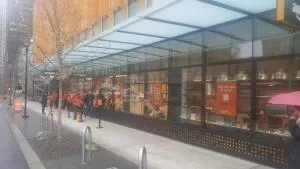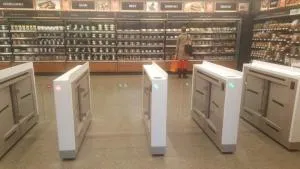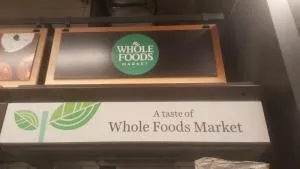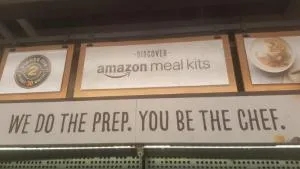Experiencing Amazon Go
Blog: Capgemini CTO Blog
I enjoyed the Amazon Go experience when visiting Seattle in the first week they opened for the public. Of course, it’s always difficult, as professional in the retail sector, not to be blinded by professional interests (‘how have they organized and realized this’), and to genuinely focus on the customer experience of ‘just walking out’. Yet, from both perspectives, it was an interesting and impressive experience.


I timed 12 seconds: the hipster guy walking in, immediately going to the ready-made lunch meal shelf, taking a few seconds to determine his choice, then to the beverages shelf next to it – and then walking out. Just like that. His only human interaction was saying ‘hello’ to the Amazon greeter when entering, and ‘have a great day’ when leaving. Obviously, he was experienced, most probably an Amazon employee who has been using Amazon Go for quite some time already.



And also when I put on my own consumer-hat: it worked! It’s very, very simple: install the app, scan the QR-code at the entry-gate (yes: as sophisticated the store-technology is, you still enter via a ‘conventional’ QR-code), pick your stuff and just walk out. And a few minutes after the visit, you’ll see what you walked out with – and what you paid. Of course, I tried a few tricks: picking an item and putting it back again, picking an item when being very close to someone else who’s also picking something in the same shelf, picking 2 items next to each other and put one back. But after all: the items I walked out with were accurately recorded, no mistakes.





The assortment is what you would expect from a typical convenience store. In the shop-window, you can see the cooks preparing the meals, which you can buy in the store. And when you enter, the first shelves you see are the entrees and bowls, salads, wraps, sandwiches and breakfast items. Next to that the drinks: juices, milk, teas, bottled water etc. Entering the store further, you’ll find the dairy, snacks, alcohol and wine (with dedicated Amazon staff-person), meal ingredients (pasta, sauces) etc. Interesting is also the ‘meal kit’ selection: ‘we do the prep, you be the chef’. There is a separate shelf with ‘a taste of Wholefoods Market’. Finally, when you walk out, you can walk into a separate area next to the entry/exit-gates, facing the street, where you can eat your meal.

From a consumer convenience-perspective, this is a truly ideal experience. Only use your phone when entering, the rest is complete ‘hands-free’. It’s the User-experience in a physical grocery setting. For consumers this is such an easy experience that I have no doubt adoption will happen quickly – of course providing the underlying technologies and operations prove to remain accurate and reliable when rolled out massively.


When you look above your head, you’ll notice an impressive installation of cameras and sensors in the ceilings (but: only when you look for it – ‘normal’ consumers will not notice it). Every move you make is captured, and when consumers leave the store with their goods, they have also left a rich data-trail. This is the treasure-trove for next-generation, data-driven retailing, which provides all relevant insights that will help further optimize the store, assortment and shelf-plans, as well as to synchronize in-store-supply with actual real-time demand. Of course, there will be a learning-curve for Amazon Go, as I noticed a number of ‘out of stocks’ (with message-cards saying ‘so good it’s gone’).


Future will tell whether indeed Amazon Go represents a next step-change in ‘autonomous store retailing’. But my prediction is: yes!